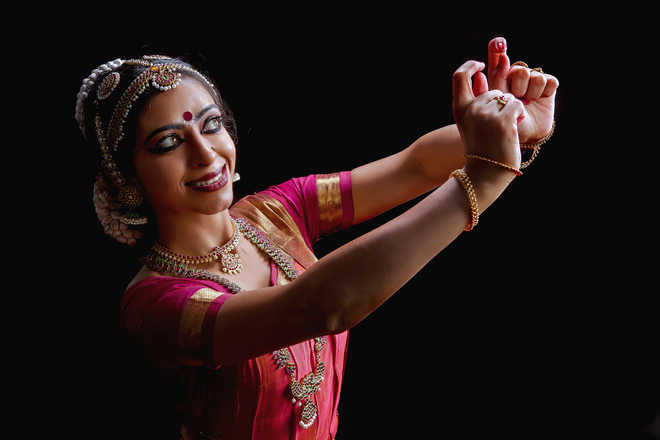Manpriya Singh
Classical dancer Apoorva Jayaraman’s profile right away leads to a couple of questions. The fact that she chose to professionally pursue Bharatnatyam post a PhD in astrophysics from Cambridge University is the one she is particularly used to. “People expect some dramatic answer or some miraculous story behind it, but there’s none. It was just like that. I had spent seven years studying physics, whereas at that point I had been doing Bharatnatyam for the past 20 years of my life so the tilt was always towards my passion,” she shares, while in Chandigarh for an event by SPICMACAY aimed at the Beti Bachao Beti Padhao campaign.
At the age of five when she was actually introduced to Bharatnatyam in school, “it was just another subject and so something she naturally needed to do well in.”
While people see an unlikely grouping in physics and dance, she sees the parallels in two streams. “For me, while pursuing science I apply the same rules of creative intrusions, whereas while pursuing dance, I structure the approach to my body quite scientifically,” says the born and brought up in Bangalore girl who feels any science wizard will always have some creative bent of mind. “Either they play the piano, or violin. If you dig deeper into history, you’ll know that art will always percolate in the scheme of things.”
Art vs science
Only it’s not a versus for her. Currently working on a research project, she feels the two can actually explain much beyond the understanding of the human mind. “I have a fellowship for the project and it’s been funded by the Ministry of Culture, wherein I try and draw parallels between art and universe. I explore art as a tool of enquiry, something with which you try and understand the universe around you,” says the former student of St. Stephen’s College, Delhi, who feels classical Indian art forms are much beyond we make them out to be.
Commercially speaking
It’s not a promising picture when it comes to financial rewards of pursuing a classical Indian art form, at least not in the initial decade or two. That was one of the thoughts that did cross her mind before she switched fields for good, but not the several years of hard work that lay before her. Although, ‘there is no set path. It’s not like school or college that you put in these many number of years in classical dance and you’ll reach at a certain point. It’s a life-long commitment towards learning.”
Indian arts in the West
The fact that foreign audience comes in without prejudice against it and also without any bias for it, plays a significant role in opening them up for it. “When they watch good quality stuff, they really take to it and even ask interesting questions at the end of a performance.” She adds, “In the West, they have just become aware of the idea of embodied learning, something we have been doing for the past several hundred years through our ancient art forms,” she signs off.
manpriya@tribunemail.com
Unlock Exclusive Insights with The Tribune Premium
Take your experience further with Premium access.
Thought-provoking Opinions, Expert Analysis, In-depth Insights and other Member Only Benefits
Already a Member? Sign In Now











